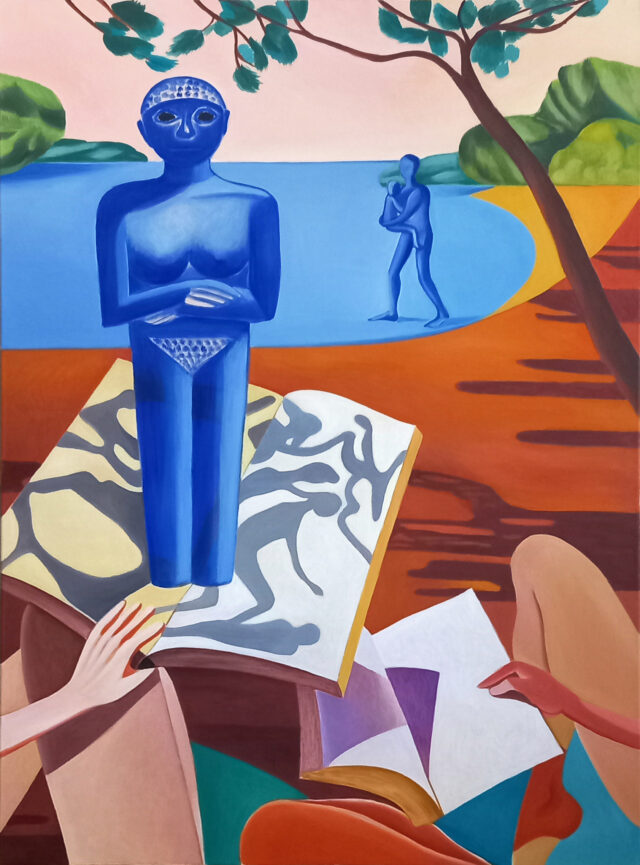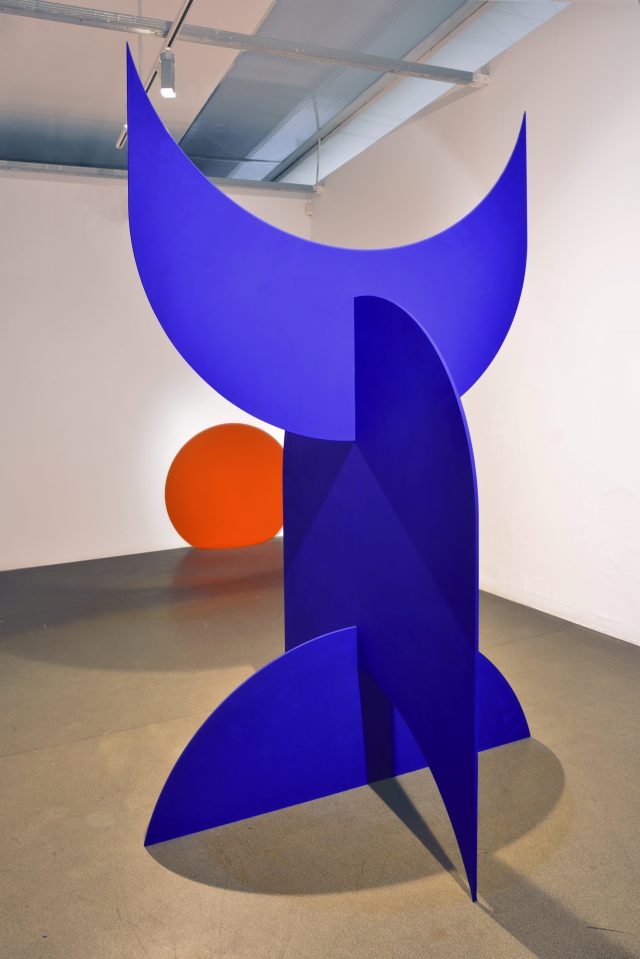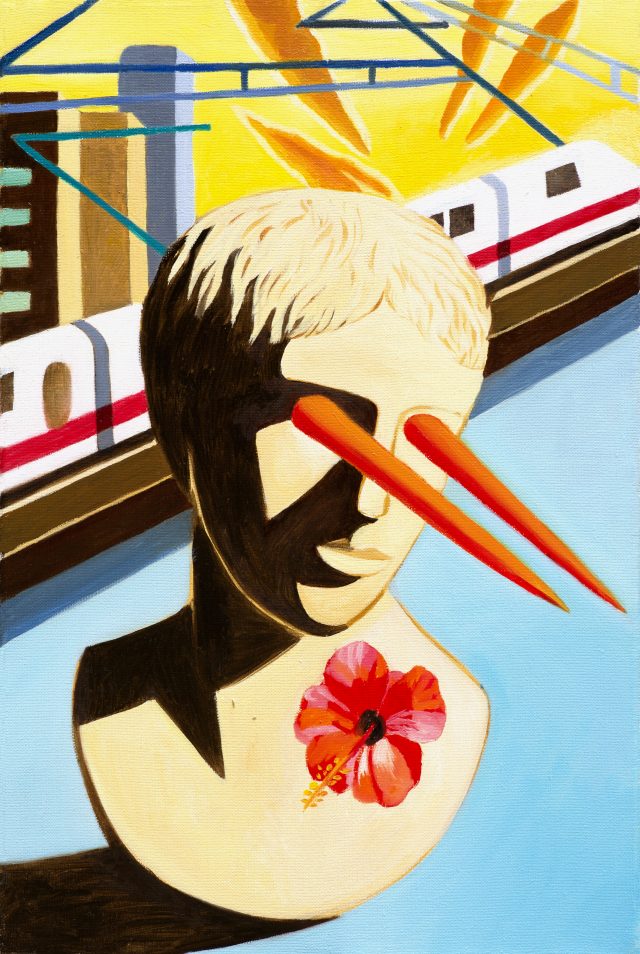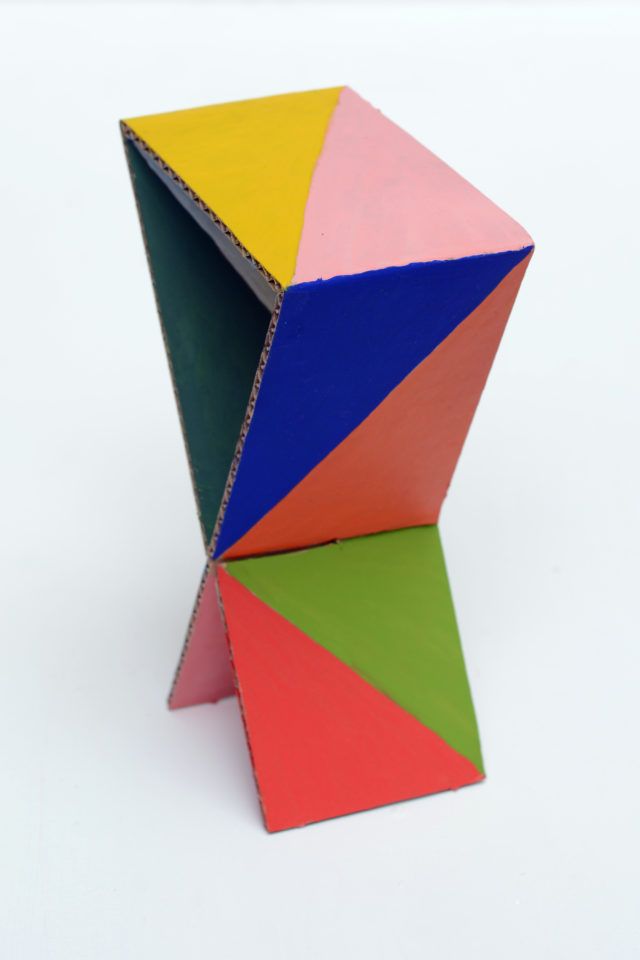The zenith is the point in the sky directly above the observer’s head. When the sun is in the zenith, there is no shadow, there is only light. Kinga Nowak’s paintings, according to Małgorzata Kitowska-Łysiak, ‘strike you with the freshness of the motifs, which can be described as “archaeological-anthropological” (Archaeology, The Instrument). Painted flatly, in boldly brightened colours, they appear to be not only decorative, but also intriguingly luminous, as if infused with extra light from the sun in zenith – they catch the eye.’ What constitutes their hidden dimension, given all this luminosity, is the awareness of the shadow. And this is not about the existential darkness, but rather about the obscurity caused by things hiding from us. Kinga Nowak builds up the tension between a desire to endow past worlds with form and the present time. In a way, the artist constructs her own museum of imagination, except that the exhibits are not isolated but rather interact as actors of equal standing in the para-theatrical shows that she stages. In a number of the works in the exhibition, darkness and mystery are epitomized by masks. There are, however, various themes and motifs here. The artist depicts different places in her paintings. Sometimes these are ancient ruins, as in The Source, in which we can recognize such figures as the bull-leaper of Knossos, or goddesses and mythical animals from the 12th century BC. In other instances, she invokes situations that bring to mind the accounts of ethnographers researching exotic tribes; the pictures feature the Guinean Fang and Gabon masks from the Musée de l’Homme in Paris, or the Staatliche Museum zu Berlin, as well as modern Tanzanian masks (Goats). The composition of Smoke is structured around a wooden figurine from Zaire. Emerging on both sides are Egyptian sculptures of female torsos from 4500 BC, with the buildings of Berlin’s Museuminsel in the background. In one of the paintings, a woman surrounded by pedigree cats is leaning over a wooden musical instrument resembling a human figure; this is the Sub-Saharan mbira, also known as zanza or kalimba. All these symbolic spaces conjure up the connotation of stage design, further intensified by the manner in which human figures are depicted, as though some of them were actors in a play while others are viewers – observers; animals assume similar roles. Through references to primitive art, the artist also articulates a certain affinity to cubism – not only by invoking prehistoric artefacts, but also through the geometrical drawing and the manner in which she constructs form and space within the picture. However, to quote Małgorzata Kitowska-Łysiak again, ‘the artist seems to be using a certain ploy: she treats reality as a catch-point for the eye (Archaeology), a pretext to demonstrate how she breaks free from painting conventions.’ The exhibited series of Kinga Nowak’s paintings force the viewer to ask questions about the thematic threads that integrate them into a whole. She herself refers to her work as the combined outcome of reflection on the roots and a desire to reach the sources endowing personal events and experiences with meaning in a cultural perspective.



